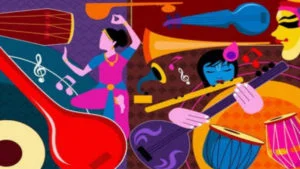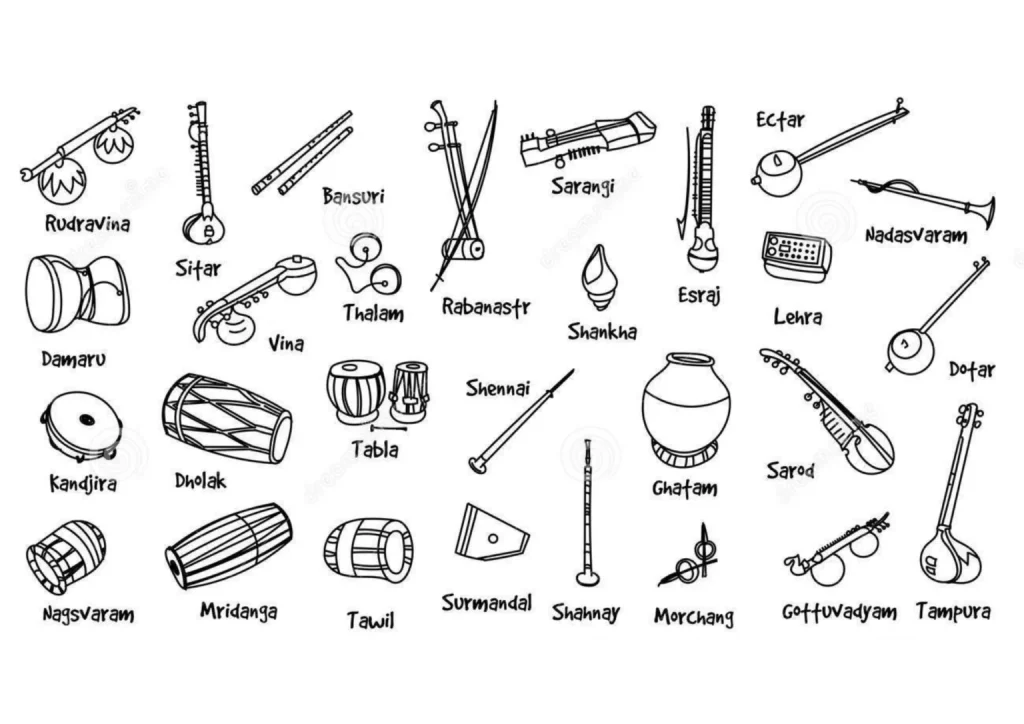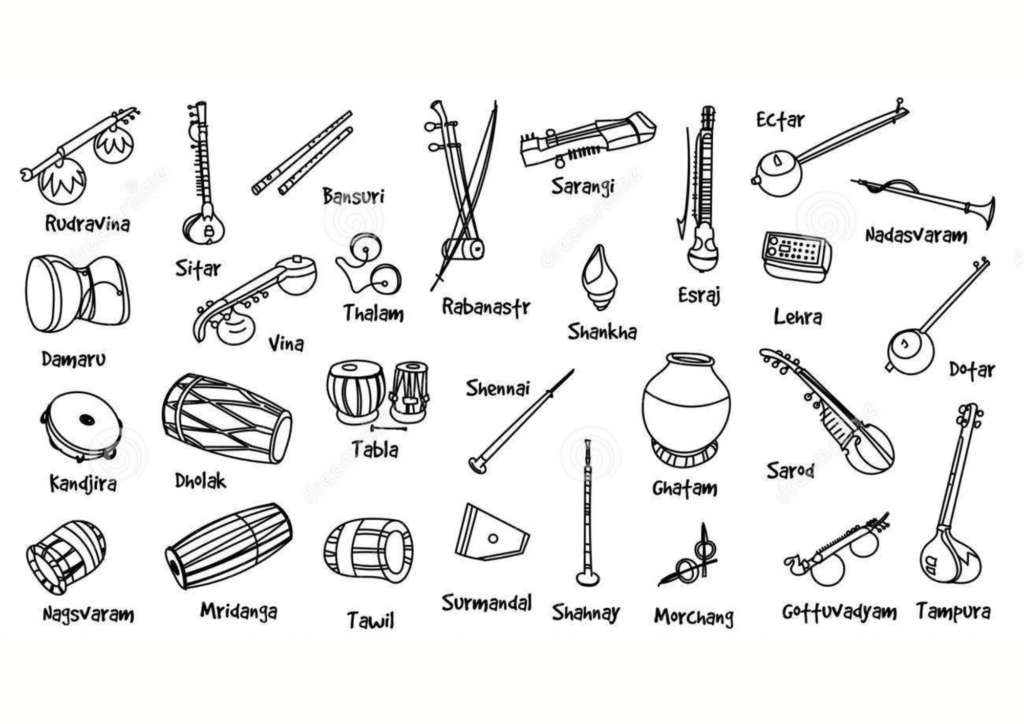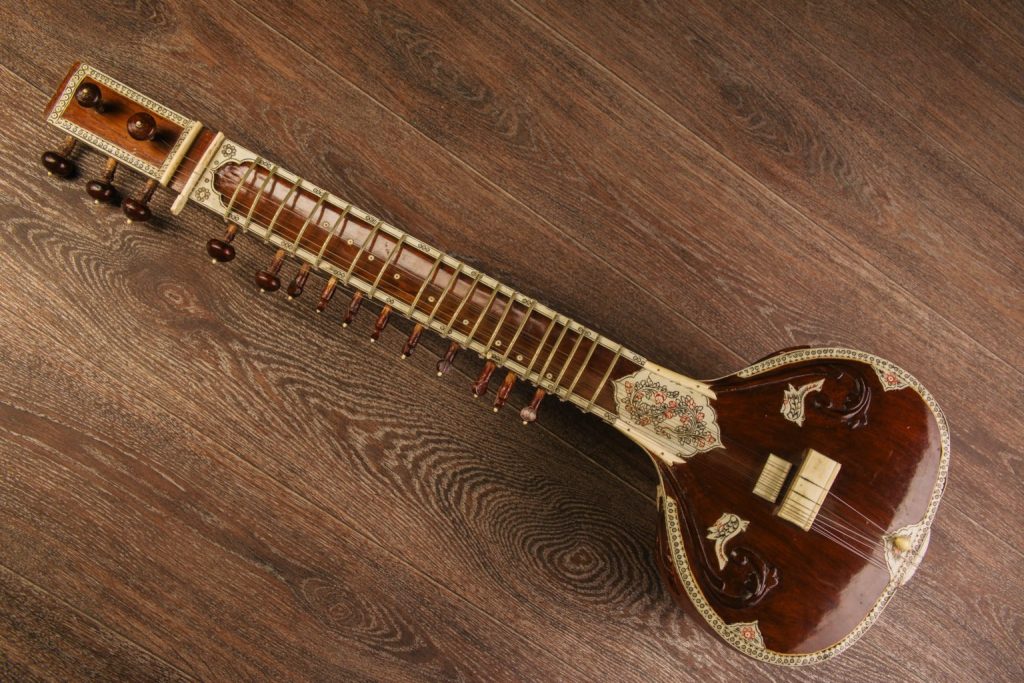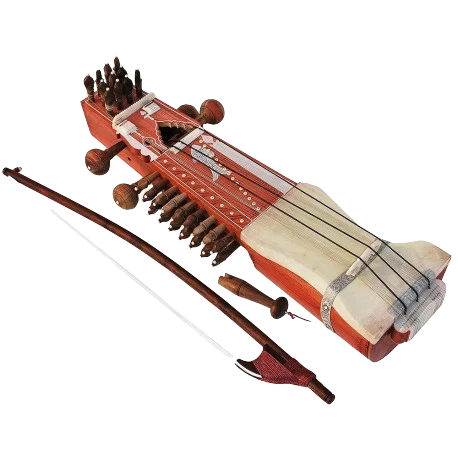This article is about Veena – one of the various classical musical instruments in India. We will learn all information related to Veena as well as some amazing facts. Some people are spell it as “Vina” though “Veena” is the most popular well of spelling it.
Here, we are referring to the Sarasvati Veena. This instrument belongs string instruments family. It is accompanied in Carnatic music and Hindustani music. The Veena music instrument gives an exotic melody. It may help in curing people’s moods and is helpful in improving the psychological well-being of many.
- What is the Veena instrument?
- History of Veena Instrument
- What is Veena in English?
- Veena vs Sitar
- Is the Veena instrument difficult to learn?
- How old is the Veena Instrument?
- Who is the best Veena Instrument player?
- How can you learn the Veena Instrument?
- Veena Information and Amazing Veena Facts
- Conclusion
- FAQs
What is the Veena instrument?
Originally created in the south of India, the veena is a plucked string instrument. This actually belongs to the family of chordophone instruments of India. The veena in many parts of the country has different types which are Rudra Veena, Sarasvati Veena and Vichitra Veena. Carnatic music, in the south of India, widely uses the veena. It is sad to see how the Sitar is replacing the Indian veena, in the north.
This instrument can produce music in a wide range which is usually in the three-octave range. The Hindu Goddess Sarasvati holds this instrument in her hand, as well. In south India, it has a pear shape, 24 frets and 3 strings for producing melodies. The lower gourd of the Veena is present in the Northern part of India.
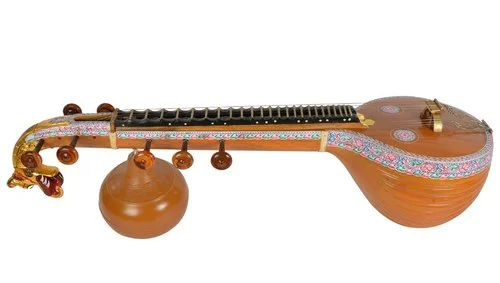
History of Veena Instrument
The Sanskrit language has derived the term ‘Veena’. This became a popular term in ancient and medieval English literature. It has its mention in various Vedic literature including Rig Veda, Samaveda, Satapatha Brahmana, and Taittiriya Samhita. According to a famous music professor Sunnera Kasliwal, the musical instrument of Vana emerged into the term veena in the present times. The Upanishads, Rigveda and the Atharva Veda have all mentioned the use of this musical instrument. The Natya Shastra, written by Bharata Muni, has also mentioned the veena as a musical instrument.
What is Veena in English?
As mentioned earlier, the Veena is a Sanskrit term. Nonetheless, in contemporary times, it is ‘Veena’ is English, as well.
Veena vs Sitar
Veena and Sitar are different from each other. The south Indian music incorporates the Veena a lot. Nonetheless, in Hindustani Classical music, the usage of Sitar is prominent, which is from North India. Sitar and Veena, although look similar, are not the same.
People also called the Veena, the Rudra Veena and the Sarasvati Veena. It has a height of about four feet a resonator or Kudam. It also has a long neck that looks similar to that of a sitar. The veena has steel strings, seven in number.
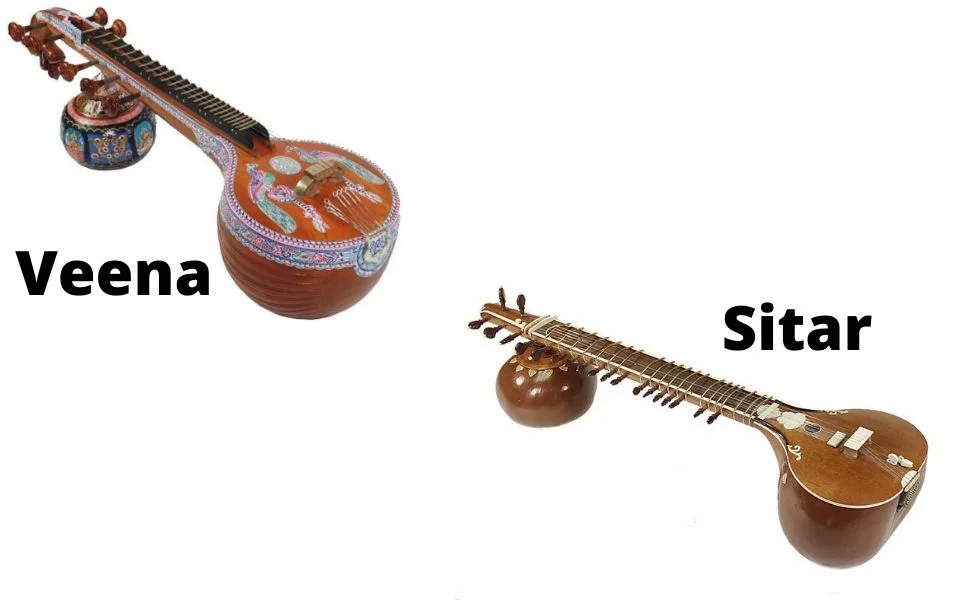
Created in the 13th Century, the Sitar is a plucked instrument. This instrument has two bridges whereby there is a big bridge and a small bridge. Please go through this lesson on Sitar – the classical music instrument to learn all about Sitar.
The Veena and the Sitar players sit in different positions. One sits cross-legged to play the veena. Nonetheless, one keeps the instrument on the left foot and the right knee to play the Sitar. Sitar is not as ancient as a Veena is. This is because the Veena was in the early mythological literature of India.
Is the Veena instrument difficult to learn?
Learning Veena involves high level of synchronization and regular practices. The middle and index finger is important in order to play this instrument. Also, learning Veena is difficult in the sense that being a string instrument it is time-taking to learn the basics of the classical musical notes. The time needed for learning instrument differs from one person to another.
Veena: A quick guide to learn Veena Indian Musical Instrument
Learning veena necessitates a concerted effort to train one’s ear to recognize different types of music. One should also be able to play the instrument while listening to that music.
How old is the Veena Instrument?
Veena is an ancient instrument that was even in our mythologies and Vedic literature like the Atharvaveda, Rig Veda, the Natya Shastras. It is a musical instrument that Goddess Sarasvati plays and it also dates back to the Vedic eras. Carnatic Music, from the 17th century, uses the music of the Veena. Later on, Hindustani music as well.
Who is the best Veena Instrument player?
India is a land of cultures that is more enormous by the arts of dance, music and so on. There are various veena players who are the best at playing this instrument. Ravikiran, Veena E. Gayatri, Sundaram Balachander, Gopal Shankar Mishra, and so on are the most popular veena players in the country.
Arsad Ali Khan was the best Rudra Veena player amongst the Hindus. He used to play the instrument in the dhrupad style and won the Padma Shri by 2008. He is the best living legend in the Hindu religion.
How can you learn the Veena Instrument?
The learning of basics in Veena is easier to play than the other Indian instruments like flute and so on. One also learnt the basic music notes and practiced them regularly. Learning to play the instruments with the middle and index fingers in a proper manner. One also learns to understand various tunes in a proper manner. Playing Veena in an expert manner and learning it properly may take a lot of time.
Veena Information and Amazing Veena Facts
The Veena is definitely a very interesting musical instrument and there is a lot to know about it. Hence, this article is bringing to you some facts about Veena that you might not know! This will not only increase your knowledge on the instrument and its working but it might also help develop a passion in many who did not know it existed.
Veena Types
The Veena is there in both South Indian cultural music as well as North Indian cultural music. While the south Indian cultural music is the Carnatic classical music, the North Indian cultural music is the Hindustani classical music. The veenas that are generally in the Carnatic classical music are the Sarasvati veenas. On the the other hand, the veenas generally in Hindustani classical music is the Rudra veena. Apart from the Sarasvati veena, Chitra veenas are also in Carnatic classical music and, Vichitra veena is also in Hindustani classical music. One shall know that both these types of veenas not only produce traditional and classical melodies but are also producing modern and contemporary melodies.

Rare Veenas
There are some veenas which are the Ekanta veenas that are not common and have an extremely unique characteristic. The entire veena consists of a single piece of wood! Such veenas are hard to find because of their building structure. Many people also order their veenas and customize them through the weight of the musical instrument and the quality of wood. They can also ask for a customized Ekanta veena but due to its rarity and the higher level of difficulty to make such a veena, the prices will be higher than a regular veena.
How old is Veena?
The veena is the Divine instrument. It is one of the oldest instruments in ancient India. The veena finds mention even in the Vedic scripts. The Veena plays a part in shaping the course of Indian traditional music from the ancient times. Such melodies cannot come from any other instrument in the world. The veena music can provide spiritual healing as well as feeling of communion as well as connection with a higher being.
It is also called the divine instrument because it is an instrument which is believed to have been played by the Gods in Hinduism- Lord Shiva and Goddess Sarasvati. The veena can also be seen as a boon that was handed down to human beings by the Gods so that we are able to enjoy its melodiousness. Goddess Sarasvati is referred to as the veena pustakadhaarini which corresponds to the fact that she is the inspiration for all music and for intellect. Therefore, in any image of Goddess Sarasvati, one will inevitably notice not only a book but also a large Veena.

Veena for Salvation?
In Hinduism, the sound or even the sight of the veena is said to provide a salvation from the sins of an individual. The belief that many people share in thus regard is that even viewing a veena during the lifetime of an individua can bring peace and tranquility to them. The Veena, then, also gives these same gifts in the afterlife of an individual. This means that if an individual looks at or plays the veena in their life span then they will be blessed by it even after their death. This love and peace is not only available to those people who have committed a sin or some form of crimes but it is there for one and all.
Each Veena part belongs to a God?
Many musicians also find themselves of the opinion that one Hindu God lives in each and every part of the veena. This means that the Veena itself is not just the divine instrument itself but it is also the abode of the various Hindu Gods and Goddesses. For instance, Shiva stays in the neck of the instrument while the strings are homme to Parvati. Along with this other God and Goddesses such as Lord Brahma, Lord Vishnu, Goddess Lakshmi and Goddess Sarasvati all reside within different parts of the veena.
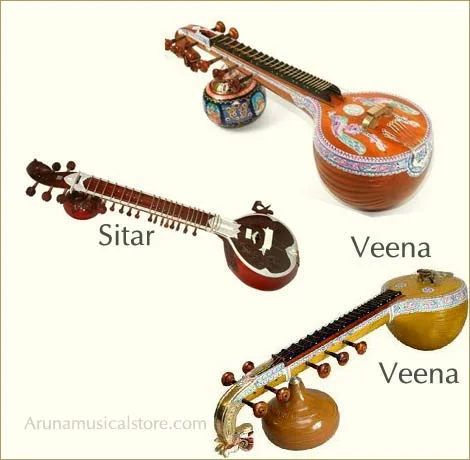
Veena for Relaxation
Listening to sounds and songs of different frequencies can alter the moods and emotions of an individual. For instance, it can calm an individual down if they are having a fit. This is not only important to regulate and control your own mood but this is also essential from the point of view of meditative practices. The veena music is recommended by musicologists who have delved deep into these studies and have come to a conclusion. These researches have proved that the veena music facilitates one’s meditation and provides a more relaxed mindset. The melodious strains produces by the veena can help one overcome mental struggles that they might be facing.
Veena Lovers
Another interesting fact about the veena is that along with a lot of lovers that it has throughout the world, Nobel prize winner, C.V. Raman enjoyed it greatly too. The particular reason for this was the build of the veena itself which almost felt surreal and magical to him. However, it is needless to say that just like him anyone would be hypnotized by the sweet sounding notes of the veena. It is truly an incredible instrument!
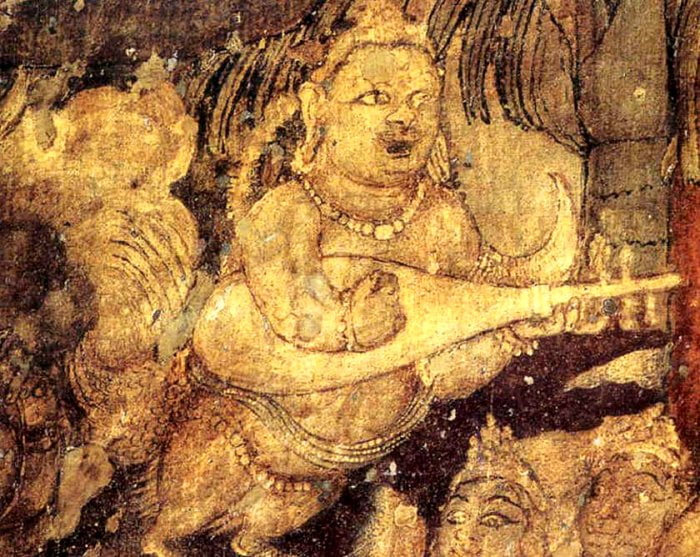
Veena and Ravan
The Veena is also associated with the Sri Lankan King, Ravana from Ramayana. Ravana, a stout disciple of Lord Shiva knew how to play the Veena extremely well. Once, after committing an error and upsetting Lord Shiva, Ravana begged for forgiveness in a very unique manner. He snatched his chest in such a way that it exposed his nerves which he tied down to his toes and created a Veena out of his body. He played this Veena in order to seek Lord Shiva’s forgiveness who upon hearing the beautiful music blessed Ravana. Therefore, references to the Veena have been a part of our culture from the beginning.
https://learn.humsa.com/music/western-and-indian-string-instruments/
Conclusion
Veena is considered to be one of the oldest classical instruments in India. It represents our culture and heritage of music. Mentioned in various ancient texts in Indian mythology it is one of the musical instruments from which many other string instruments are made.
Musical instruments are good for mental health and are also needed to reduce stress, anxiety and so on. Learning of a musical instrument like veena makes an individual patient and keeps one’s mood good. It also helps to develop the cognitive functions of individuals and develop the health and well-being of people. Learning veena is also beneficial for increasing patience. There is also a connection between better educational performance with that of learning this musical instrument.
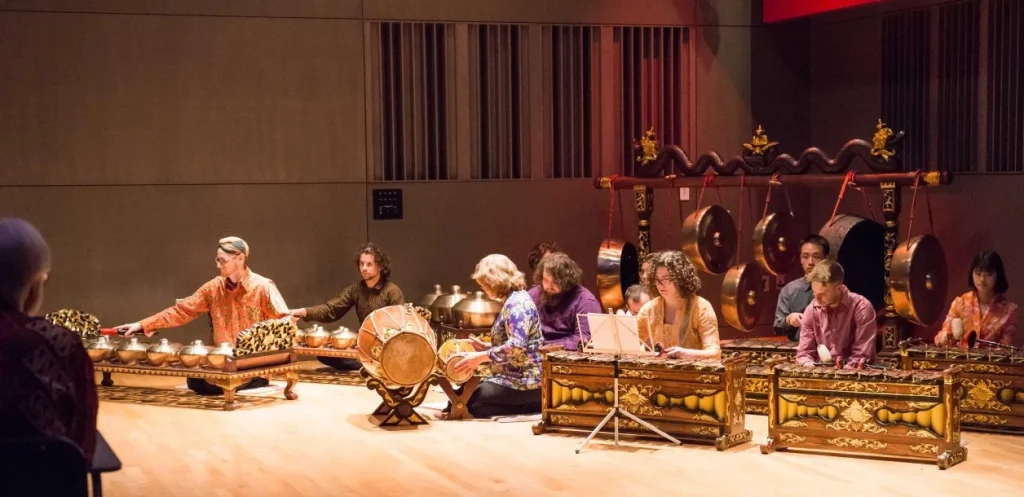
FAQs
Q. What is the Veena instrument called in English?
A. Veena is a string instrument which shares similarities with the sitar or sarod and the three belong to the realm of Indian classical music. However, in English, the veena is called a harp which similarly, is also a string instrument and can be played with one’s fingers.
Q. Who are the top Veena players?
A. India has been the home to some of the best Veena players in the world. some of the names that have been internationally acknowledged are Asad Ali Khan, S. Balachander, Jayanthi Kumaresh, Ranjhesh Vaidhya as well as E. Gaythri. Nirmala Rajasekar, who also excels in Carnatic music has been invariable called the best veena player in the world.
Q. What sound does a Veena make?
A. Veena is an instrument belonging to the Indian classical music tradition and it is a string instrument. Therefore, fingers can be used in order to move the strings in such a manner that music is created owing to the hollow in the instrument. The vibrations of the strings are what creates the sweet and melodious music. The strings of each of the string instruments are different and so, there is a difference between the sound produced by them as well. for instance, this is one of the differences between the veena and the sitar.
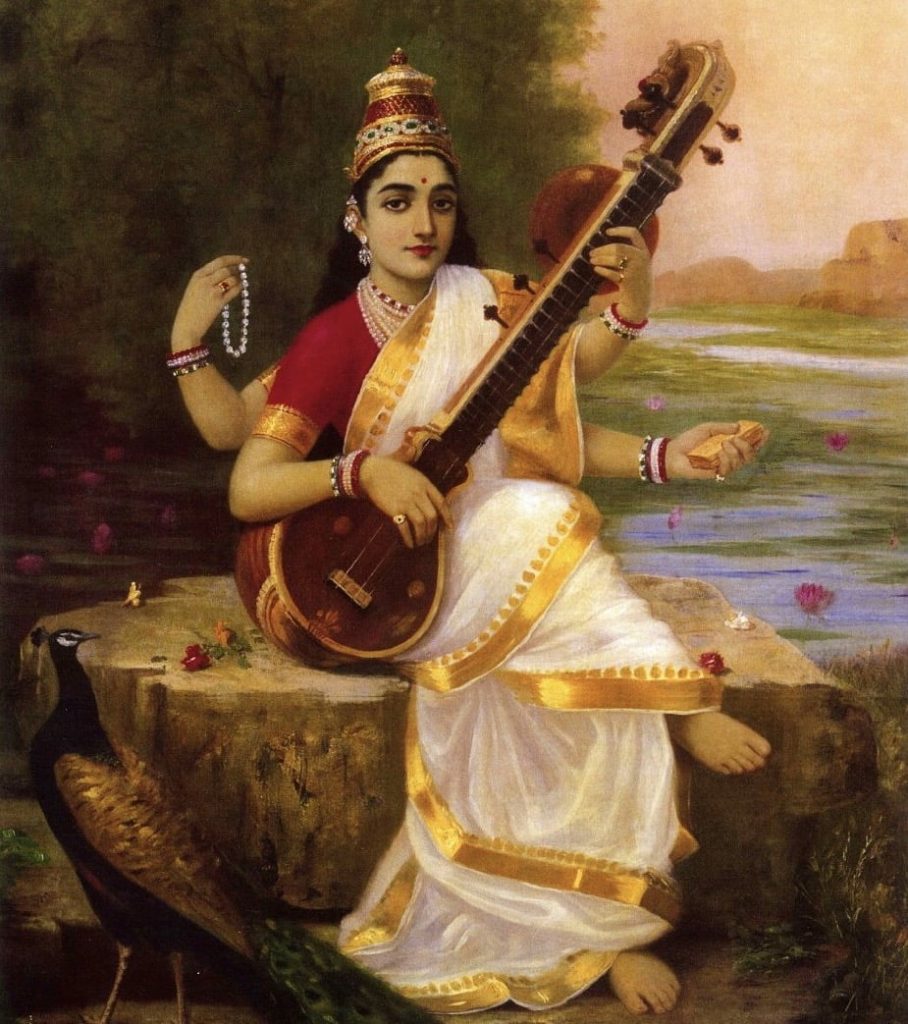
Q. What is the Indian instrument, Veena?
A. The Veena is an incredibly beautiful classical Indian musical instrument. This instrument creates music with the help of strings. the Veena is one of the oldest instruments that have existed in India. This is known because it has also found its mention in the centuries old Vedic scripts. there are different sorts of veenas which can be classified on the basis of their design such as the rudra veena, saraswati veena or even the vichitra veena. Since the veena is an ancient instrument, it is treated with the utmost respect in Indian culture.
Q. What is Carnatic music?
A. Carnatic music forms one half of the segregations within Indian classical music. it is an assembly of the music from the southern states of India. These states are Karnataka, Andhra Pradesh, Telangana, Kerala as well as Tamil Nadu. there are innumerable musicians who can be credited with developing or even pioneering Carnatic music. Some of these musicians are Purandara Dasa, Tyagaraja, Muthuswami Dikshitar amd last but definitely not the least, Syama Sastri. An interesting fact about Carnatic music is that it can not only be performed in isolation but also along with a dramatic representation.
Q. How is the veena played?
A. The veena cannot be played like the violin or guitar while standing. The player needs to be seated in order to play this instrument. The player is referred to as the vainika in the Indian classical music tradition. the instrument cannot be held straight in the way that cello might be. it needs to be held at an angle against the body of the player. the instrument can also be placed on the player’s lap depending upon their comfortability. The sound produced is very spiritually uplifting.
Q. How much is the cost of the veena?
A. Different sorts of veenas are for different prices. Veenas that are available online range from anywhere between thirty to forty thousand rupees. Finding the veena at any music instrument store will be easy and the prices will be consistent as to what is available online. However, specific brands may have a higher price for the veena based on the popularity of their own name as well as the quality of the wood that the veena has been built from. the weight of the veena might also matter to some consumers and sellers.

Q. What is a Tanpura?
A. A tanpura, is an instrument belonging to the Indian classical music tradition. It is also a string instrument and it is often confused with the veena. However, unlike the veena, the main function of the tanpura is not to be the primal focus in a musical ensemble. Instead, it provides support to the lead vocalist along with the other musical instruments. an interesting fact about the tanpura is that there are two sub-divisions within it. these distinctions have been based on the pitch of the male singers and female singers. Therefore, the tanpura which is female pitched is smaller in size while the tanpura which is male pitched is slightly larger in size.
Q. What are the different parts of the Sarasvati Veena?
A. The assembly of the veena between the northern and the southern states of India are quite different. The Saraswati Veena is conjured from various different parts. These are called the Naga pasha, the Langar or the fine tuning, the Nada randhra or the sound hole, the Mettu or the frets, the Tala pakkareku or the rhythm and drone strings, the Meru or the upper bridge, the Birdai or the pegs, the peg box, the Yali, the Sarrokai or the extra resonator, the Kankana, the Kuppe, the Dandi or the fingerboard, another Kankana which is actually the neck joint as well as the Kudam which the resonator itself.
Q. Who has created the Rudra Veena?
A. In India, it is believed the Rudra himself, which is the other name of Lord Shiva, is the creator of the rudra veena. it is believed that Lord Shiva was so inspired by the beauty of Goddess Parvati that he built the musical instrument and also paid homage to her by playing on it.
Share with your friends
